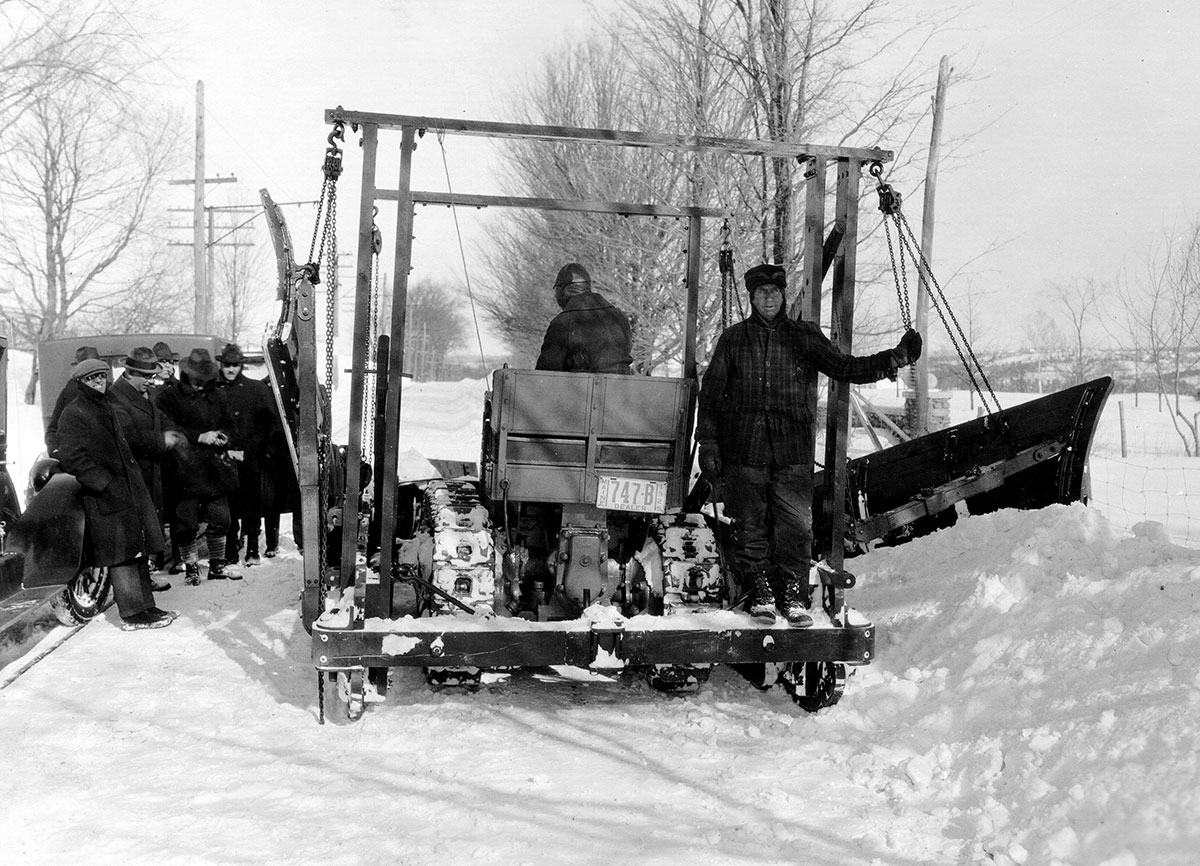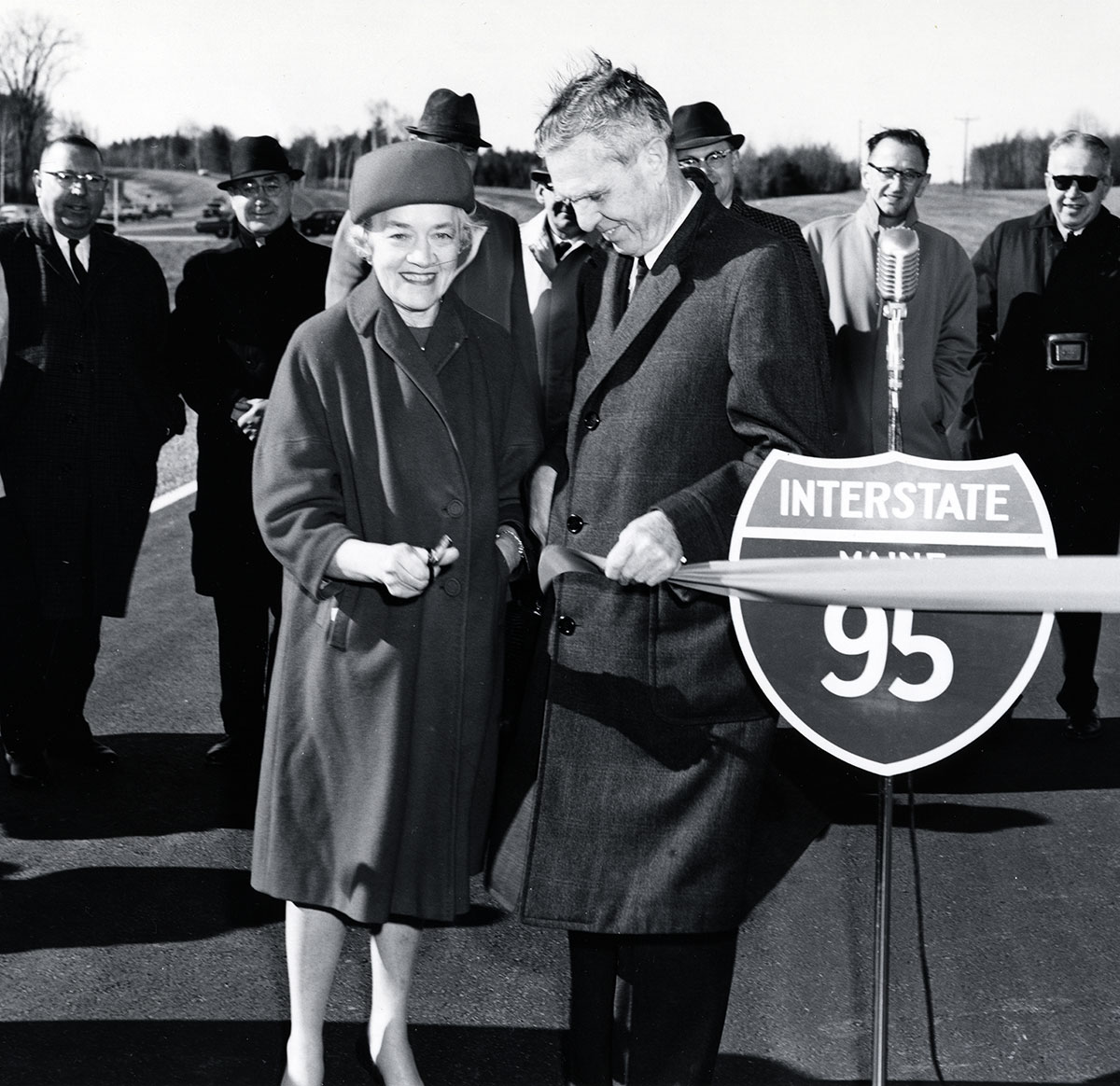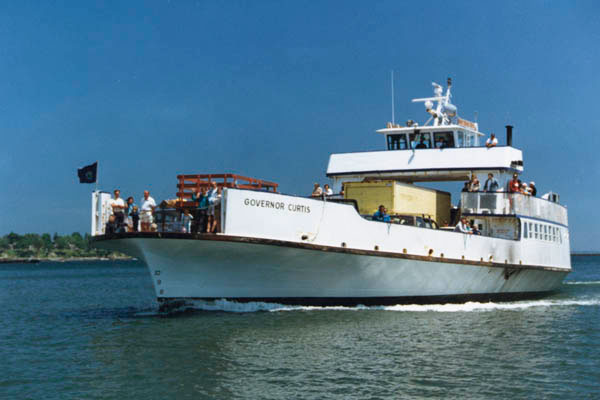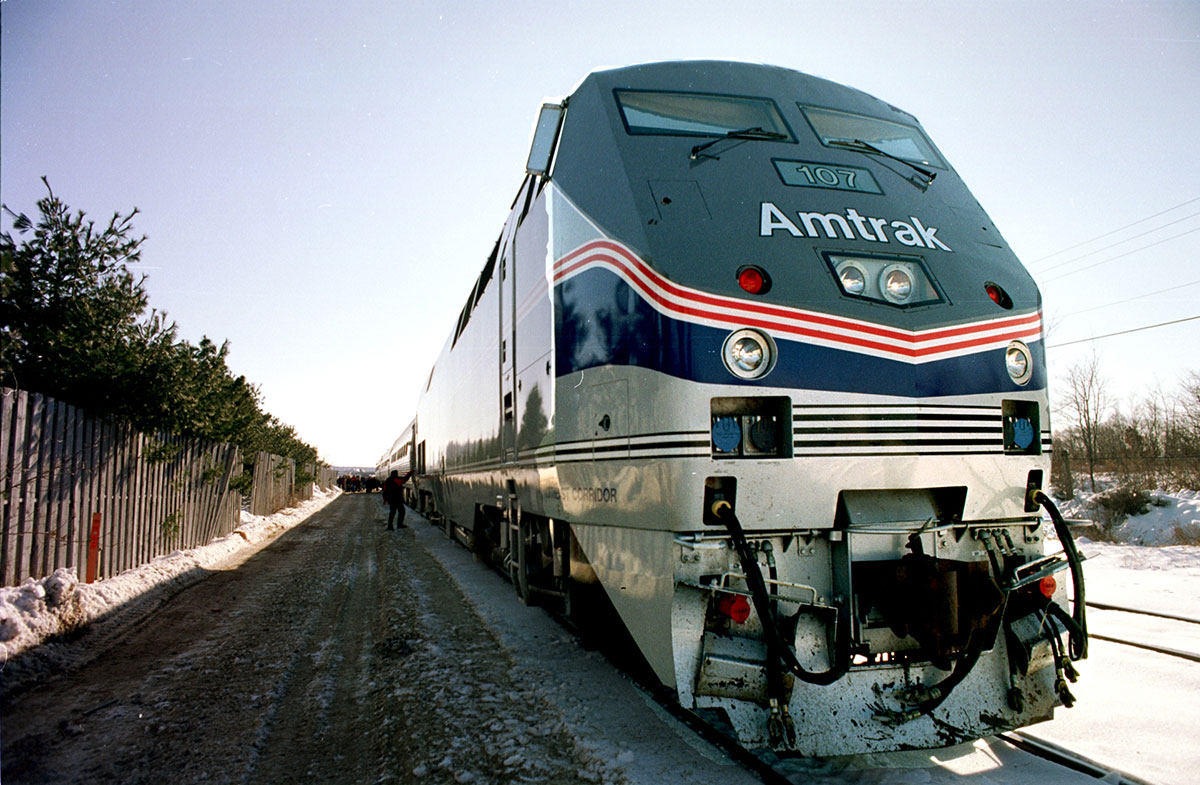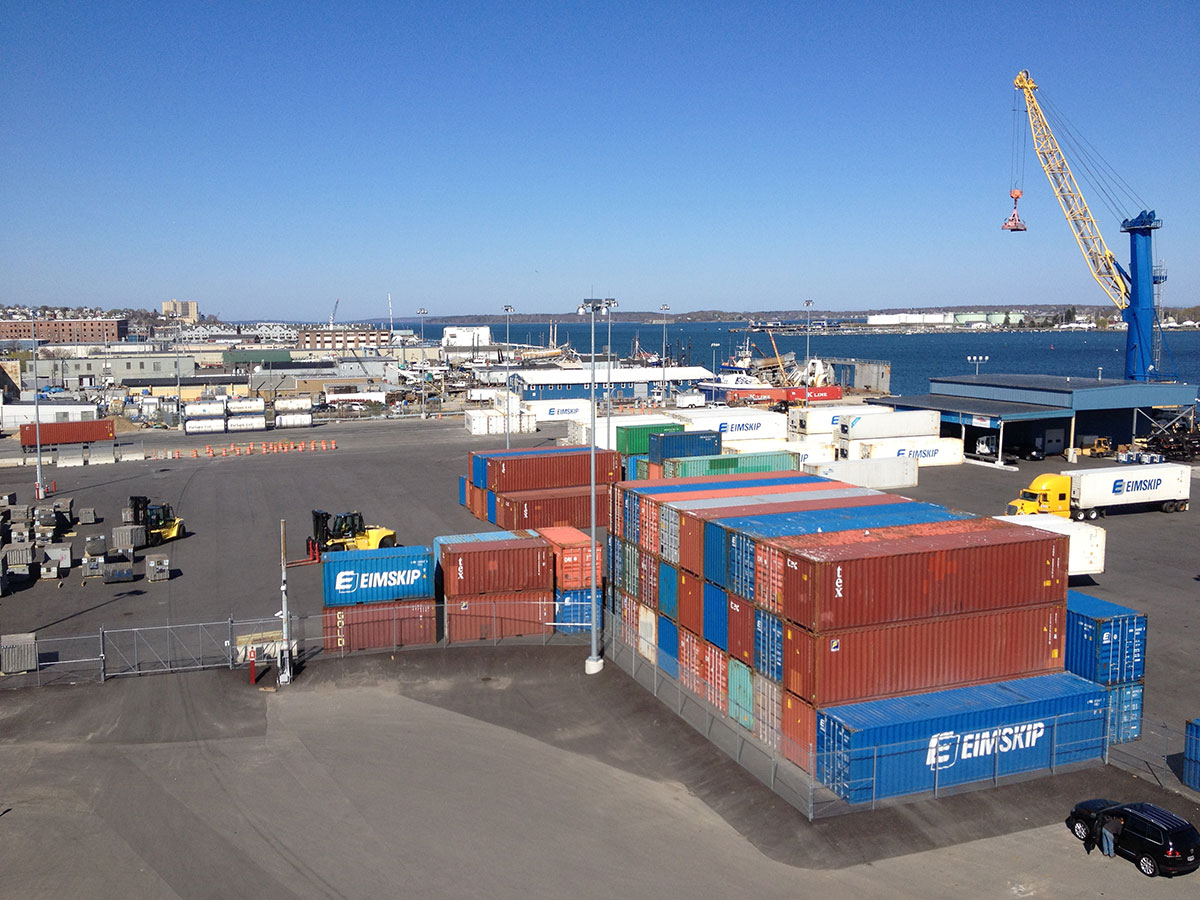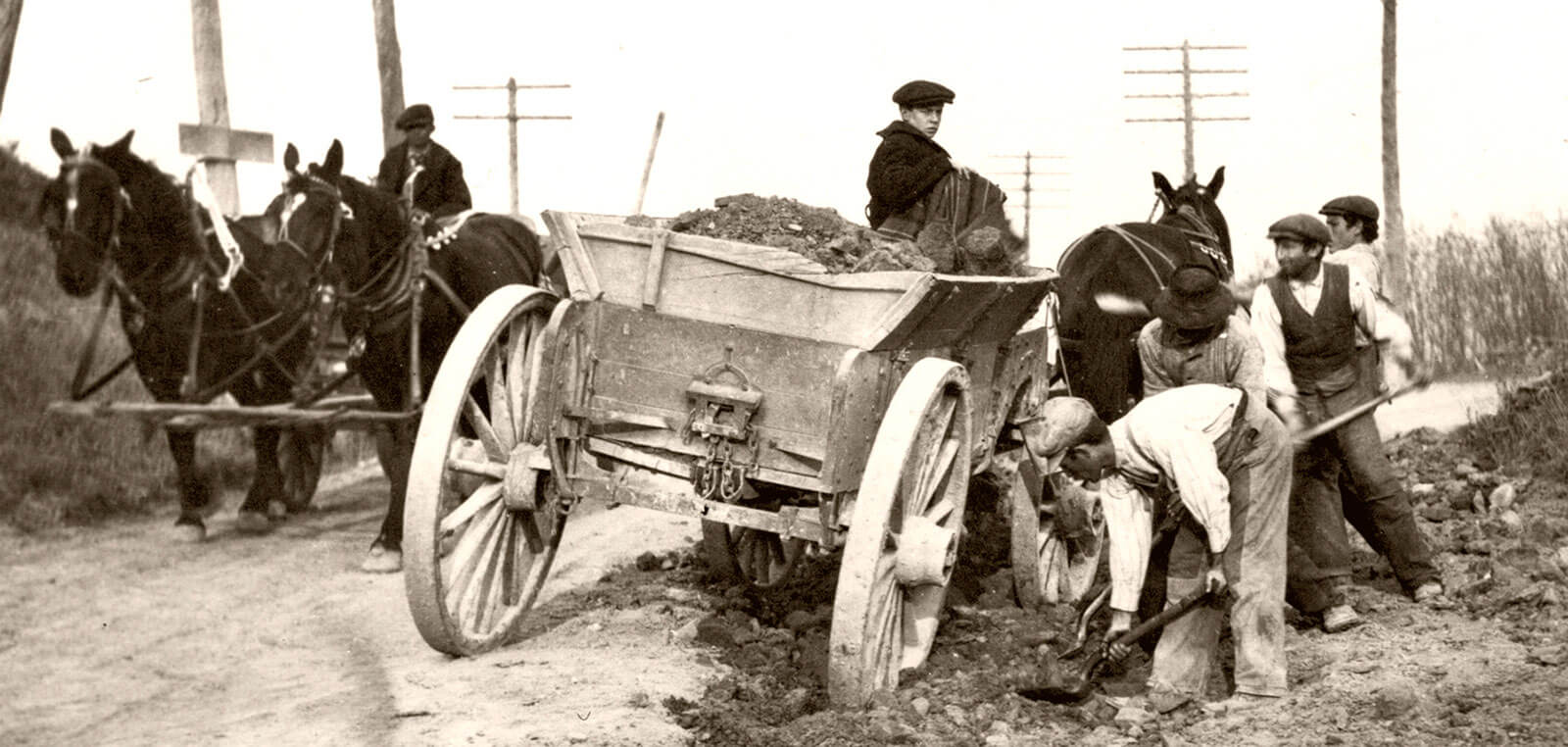

History of MaineDOT
Click on image for larger view.
More than 100 years ago, in 1913, the Maine State Legislature created the three-member Maine State Highway Commission. The Commission was charged with building a “system of connected main highways throughout the state.” This ambitious endeavor was undertaken by the Commission’s 12 employees – a chief engineer, five assistant engineers, four stenographers, an accountant and a bookkeeper. In 1913, the revenue from auto registration and driver license fees, established two years earlier, was used to finance the first highway bond issued for $2 million.
One of the most transformative programs for Maine travel was the evolution of an efficient snow and ice control plan. Serious interest in keeping Maine roads open all winter began in the 1920s. Until that time, motorists jacked up the family car after the first snowfall and impatiently waited for the season to end. During the winter of 1925 – 1926, an effort was made to keep the road open from Kittery to Bangor. A committee was formed to organize this work and solicit funds from municipalities that were unable to undertake this responsibility.
As the Department’s fleet of snow fighting equipment grew, procedures were developed to keep Maine roads safe and passable. In 1953-54, a “night patrol” was established to monitor road conditions and report back to headquarters via radio. Today, MaineDOT boasts 400 plow trucks plowing 8,300 lane-miles of road during Maine’s rugged winter months.
President Dwight D. Eisenhower signed the Federal Highway Act on June 29, 1956, thus paving the way for creation of America’s Interstate highway system that today connects people nationwide via a 42,795-mile network of roads.
The first two sections of Maine interstate funded for construction were from Brunswick village south through Freeport to the Desert of Maine Road, and the Main Street interchange near Bangor City Hospital. The Brunswick-Freeport section first opened to traffic in 1957 and the Bangor Industrial Spur (later to become part of today’s I-395) opened from Main Street to Odlin Road in 1959.
Construction of I-95, as we know it today, wasn't simply a matter of starting at one end and building to the other. Funding, property acquisition and unique construction issues all played a part. Although progress generally was from south to north, there were significant gaps in the system that forced drivers to travel winding, less safe rural routes until the entire length of four-lane divided highway was completed in September 1981.
The 1980s were marked by the completion of Maine’s 365-mile interstate system including 312 miles of I-95 and shorter sections of I-195, I-295, and I-395, and the designation of part of the independent Maine Turnpike as I-495.
Bangor Daily News writer Brian Swartz explained it this way in a 1990 article: “Not that long ago, a trip to Portland from Bangor demanded at least a full day, if not an overnight stay. Today, a family can leave Bangor in the morning, shop and dine in Portland through the mid afternoon and return to Bangor in time for the evening news. When dignitaries cut the last ribbon on I-95, road travel in Maine was never the same again.”
In 1972, the Maine Department of Transportation was established by the Maine State Legislature. MaineDOT retained the Maine State Highway Commission’s responsibilities for highways and bridges, but it assumed added responsibilities for air, rail, public transportation, ports and marine transportation, including operation of the Maine State Ferry Service.
In 1991, Maine voters decided not to widen the Maine Turnpike and to establish the Maine Sensible Transportation Policy Act, significantly changing the way MaineDOT approaches major capital improvement projects. The Act provides grass-roots advisory group input in the Department’s process for planning future transportation improvements and places additional emphasis on the examination of nonhighway alternatives for solving transportation problems.
The Northern New England Passenger Rail Authority was formed in 1995 to support ongoing MaineDOT efforts to bring Amtrak passenger service to Maine. In 2014, Amtrak has six stations in Maine, providing daily service between Boston and Brunswick.
With more than 3,500 miles of rocky coast, MaineDOT recognized the state’s location provides strategic value in an emerging global economy. In the late 1970’s, it adopted a “three port strategy” which preserves coastal resources while encouraging needed cargo port development. Over the years, MaineDOT has invested significantly in each of the three ports to help promote this growth. Recent improvements to the International Marine Terminal in Portland resulted in recruitment of Iceland’s largest steamship line, Eimskip, in 2013. It is the first new container service between Europe and Maine since the 1980s. As a result, MaineDOT is further expanding the shipping-container terminal to more than double its current size and linking it directly with a rail line, allowing Portland’s terminal to be even more competitive.
MaineDOT also serves as a vital link to Maine island residents as well as tourists. The new Rockland Ferry Terminal opened in 1996 and, today, MaineDOT manages seven ferry boats.
In 1997, MaineDOT’s first website went “online.” Now the website serves as an essential communications resource, along with social media like Facebook and Twitter.

